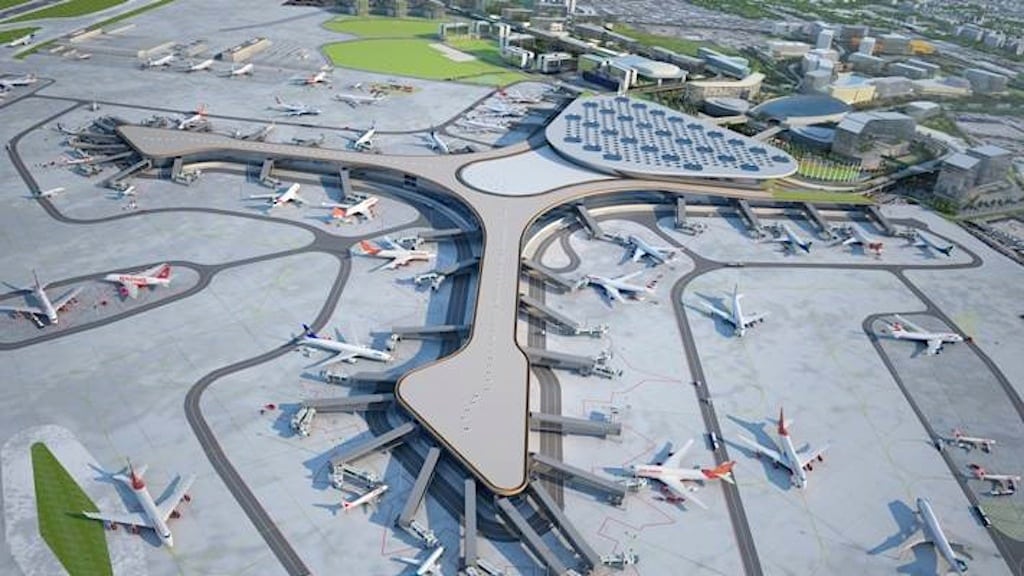Skift Take
The new terminal is positioned to attract foreign tourists and boost the prime minister's reputation before spring elections, but looking forward the terminal might not be enough to handle growing air traffic.
Mumbai airport, the gateway to India’s financial capital, will open a new international terminal in its first major upgrade in three decades as the nation aims to ease infrastructure constraints that hurt growth.
Prime Minister Manmohan Singh will inaugurate the facility today, operator GVK Power & Infrastructure Ltd. said in an e- mail. Designed by Skidmore, Owings & Merrill LLP, the architects of Dubai’s Burj Khalifa and Chicago’s Willis Tower, the terminal will boost the airport’s passenger handling capacity by about a third to 40 million a year.
New airport facilities in Mumbai, New Delhi and in a dozen other cities are part of the government efforts to convince voters that Singh has delivered on improving infrastructure before elections due by May. Polls indicate the main opposition party would top Singh’s ruling coalition. Congested ports, roads and other transport bottlenecks have contributed to India’s economic growth slowing to a decade low.
“Mumbai has appalling infrastructure,” said Kapil Kaul, chief executive officer of CAPA Centre for Aviation’s India unit. “I hope the new terminal inspires the political class to fast track all the key projects.”
GVK Power and its partners took over running the Mumbai airport in 2006 as part of government plans to modernize India’s transportation networks. The company had to demolish about 100 buildings including a police station for the construction of the new terminal that cost about 55 billion rupees ($885 million).
‘Jaya He’
The terminal, a 4-level structure spread over 439,203 square meters, will have 208 check-in counters, 60 departure immigration counters and more than 21,000 square meters of shopping area. A 3.2 kilometer (1.9 mile)-long wall, named ’Jaya He’ or ’victory to thee,’ spans three floors and is decorated with a montage of traditional Indian doors, sculptures and other artwork.
“After a supercharged Sunday tour of Mumbai’s T2, I say, confidently, that in comparison every other airport in the world seems banal and bland,” Anand Mahindra, chairman of India’s biggest sport-utility vehicle maker Mahindra & Mahindra Ltd. wrote on Twitter. “For Mumbaikars, long tortured by a hellish airport, the enormous immigration and baggage spaces are like manna from heaven.”
A three-kilometer elevated road will connect the facility with one of Mumbai’s two main highways. Domestic operations will also be integrated with the terminal next year.
Some challenges for the airport still remain. Almost a sixth of Mumbai airport’s 802 hectares (1,982 acres) of land is occupied by slums, hindering expansion of runways. The airport is working on plan to relocate squatters from 65,000 shanties as part of an upgrade that started in 2006, the operator said in a 2012 report.
Intersecting Runway
Even after the third and final phase of work to develop the airport is completed in 2020, the facility will struggle to handle more flights as it has only an intersecting runway and one taxiway, according to a report by the nation’s airport tariff regulator.
India’s local airline passengers may reach 107.2 million by 2016, making it the world’s fourth-largest domestic market, the International Air Transport Association predicts, as entry of budget carriers such as IndiGo prompt more people to fly. The nation’s operators may need 1,450 new planes in the next 20 years, according to Boeing Co.
Airports in other Indian cities have also been upgraded. In 2010, New Delhi opened its new terminal — built in 37 months — that helped more than double the airfield capacity to 60 million passengers a year. In comparison, Singapore’s Changi airport can handle 70 million passengers. Bangalore and Hyderabad in south India opened new airports in 2008.
Second Airport
The number of airline travelers passing through Mumbai may increase to 119 million by 2031, according to the City and Industrial Development Corp. of Maharashtra, the state-owned agency that’s overseeing work on a second airport for the city. The project, proposed in 1997, has made little progress amid land-acquisition delays.
On Jan 8, hundreds of workers were washing the granite floor, glass walls and white pillars at the new Mumbai terminal. Audio systems and baggage carousels were being tested.
“I’ve seen the pictures of the new terminal, and I’m very excited about my next flight,” said Samik Basu, a businessman in Mumbai who travels abroad about once a month. “Hopefully, the long queues at immigration, check-in and customs will now be history.”
Editors: Vipin V. Nair and Dick Schumacher.
To contact the reporters on this story: Siddharth Philip in Mumbai at [email protected]; Anurag Kotoky in New Delhi at [email protected]. To contact the editor responsible for this story: Anand Krishnamoorthy at [email protected].
![]()
Skift India Report
The Skift India Report is your go-to newsletter for all news related to travel, tourism, airlines, and hospitality in India.
Have a confidential tip for Skift? Get in touch
Tags: government, india, mumbai
Photo credit: Jet Airways aircraft stand on tarmac at the domestic airport terminal in Mumbai September 9, 2009. CSIA Mumbai
